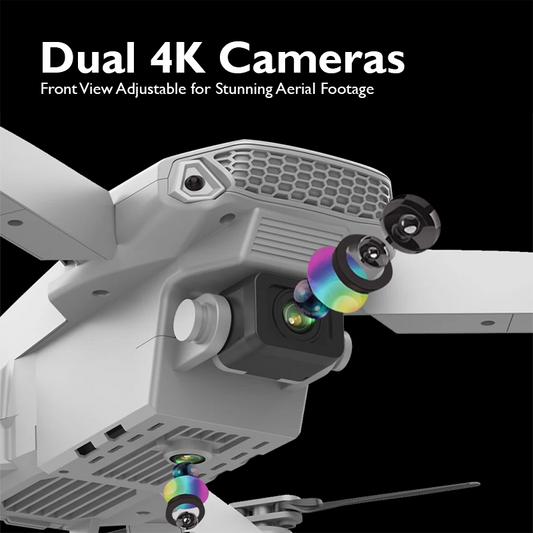Drone Technology in Archaeological Research

In the realm of archaeological research, the integration of cutting-edge technology has revolutionised the way we uncover and understand ancient civilizations. One such groundbreaking innovation making waves in the field is drone technology. Drones, also known as Unmanned Aerial Vehicles (UAVs), have transcended their recreational image to become indispensable tools for archaeologists. This article delves into the transformative impact of drone technology in archaeological research, exploring its applications, benefits, and the exciting possibilities it presents.
The Evolution of Archaeological Techniques
Traditionally, archaeologists relied on ground-based surveys, manual excavation, and aerial photography to unearth remnants of past civilizations. While these methods have proven effective, they come with inherent limitations such as time consumption, cost, and accessibility to remote or challenging terrains. Enter drone technology, a game-changer that has seamlessly integrated into the archaeological toolkit, enhancing the precision and efficiency of exploration.
Applications of Drone Technology in Archaeology

1.Aerial Surveys and Mapping
Drones equipped with high-resolution cameras and LiDAR (Light Detection and Ranging) sensors offer a bird's-eye view of archaeological sites. This capability allows researchers to conduct comprehensive aerial surveys and create detailed 3D maps of the terrain. The accuracy and speed of data collection surpass traditional methods, enabling archaeologists to cover larger areas in shorter time frames.
2.Site Prospection and Identification
Locating potential archaeological sites can be a time-consuming task. Drones equipped with thermal imaging and multispectral cameras can detect subtle variations in soil composition and vegetation, providing valuable clues to buried structures or artefacts. This aids archaeologists in narrowing down potential excavation sites and focusing their efforts where they are most likely to yield significant discoveries.
3.Monitoring and Documentation
Once a site is identified, drones play a crucial role in ongoing monitoring and documentation. They can capture high-resolution images and videos, offering a detailed visual record of the site's evolution over time. This not only aids in preserving the archaeological record but also provides researchers with valuable insights into environmental changes and potential threats to the site.
Benefits of Drone Technology in Archaeological Research

1.Time and Cost Efficiency
Traditional archaeological methods often involve extensive manual labor and can take years to complete. Drones significantly reduce the time required for surveys and data collection, allowing researchers to cover larger areas in shorter durations. Moreover, the cost-effectiveness of drone technology makes it accessible to researchers with limited budgets, democratising archaeological exploration.
2.Access to Challenging Terrain
Many archaeological sites are located in remote, rugged, or inaccessible areas. Drones can navigate these challenging terrains with ease, providing access to sites that would otherwise be difficult or dangerous for researchers to reach. This opens up new possibilities for uncovering hidden civilizations in locations previously deemed impractical for exploration.
3.Enhanced Data Precision
The use of advanced sensors and cameras on drones ensures a level of precision in data collection that surpasses traditional methods. High-resolution imagery, LiDAR data, and thermal imaging contribute to a more accurate understanding of the archaeological landscape. This level of detail not only aids in identifying potential sites but also enhances the overall quality of archaeological research.
4.Safety and Preservation
Drone technology reduces the need for extensive physical intervention at archaeological sites, minimising the risk of damage to fragile artefacts or structures. The non-intrusive nature of drones promotes the preservation of cultural heritage while providing researchers with the necessary data to conduct thorough analyses.
Future Perspectives and Innovations

As drone technology continues to evolve, the future holds even more exciting possibilities for archaeological research. Here are some potential innovations that could further enhance the field:
1.Autonomous Exploration:
Developments in artificial intelligence may lead to autonomous drones capable of independently identifying and exploring potential archaeological sites, reducing the need for constant human intervention.
2.Augmented Reality (AR) Integration:
AR could be integrated into drone technology, allowing archaeologists to overlay digital information onto the real-time images captured by drones. This immersive experience could enhance on-site analysis and interpretation.
3.Collaborative Research Networks:
Drones could facilitate collaborative research efforts by enabling real-time data sharing among researchers located in different parts of the world. This interconnected approach could accelerate discoveries and foster a global community of archaeological scholars.
Drone technology has emerged as a transformative force in archaeological research, propelling the field into new realms of efficiency, precision, and accessibility. From identifying potential sites to documenting and monitoring archaeological landscapes, drones have become indispensable tools for researchers seeking to unravel the mysteries of the past. As technology continues to advance, the integration of drones into archaeological practices holds immense promise, offering a glimpse into a future where the secrets of ancient civilizations are unveiled with unprecedented clarity and speed.
Explore a variety of drones at our online drone store.
Happy Flying!











